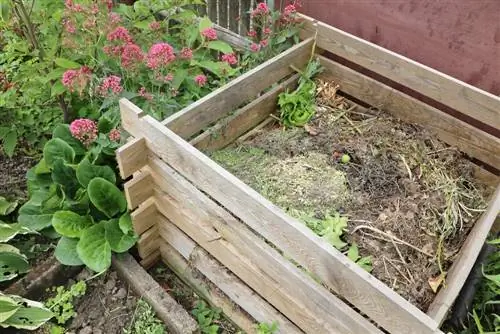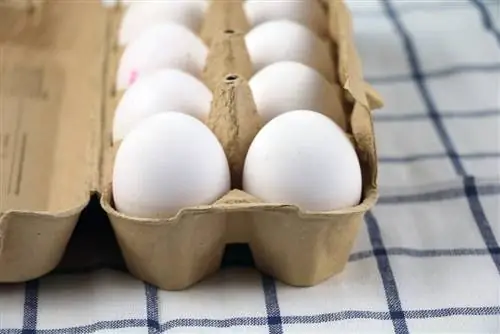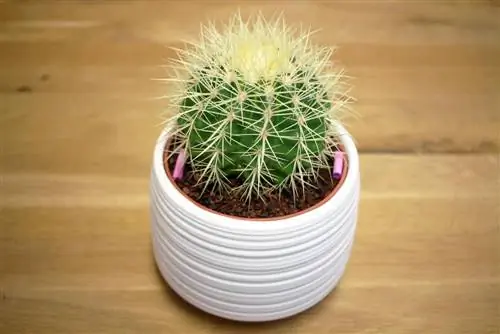- Author admin [email protected].
- Public 2023-12-17 03:39.
- Last modified 2025-01-24 12:45.
For he althy growth and magnificent inflorescences, plants need nutrients and minerals. With hydroponics, the supply is a little different than with conventional plants that are planted in soil or substrate. There is no storage option here, so nutrients and minerals have to be added externally. It is not necessarily necessary to use ready-made chemical products. You can also easily make effective organic fertilizer yourself for hydroponics. Below are some “recipes” for you.
Nutrient requirements
Hydrocultures have a higher need for nutrient supply than plants grown in soil/substrate. When making homemade fertilizers, the focus is on potassium and nitrogen. Only the phosphorus requirement is lower than that of other plants.
Potassium
This nutrient gives hydroponics more power. If there is a deficiency, the foliage dies. Potassium is found, for example, in compost fertilizer as well as farmyard manure and coal ash.
Nitrogen
Without sufficient nitrogen, plants are generally unable to survive. Older plants in particular have a high potassium requirement. A deficiency becomes noticeable through stunted growth. However, too much nitrogen also has disadvantages. Although growth is encouraged, flowering usually does not occur. Compost, for example, has high levels of nitrogen.
Phosphorus
In order for a large inflorescence to be achieved, strong flowers to grow and fruit to form, hydroponic plants need phosphorus. But only in small quantities, because an oversupply, which occurs especially outside the flowering season, could have the opposite effect. Phosphorus is found primarily in horn shavings and bone meal. However, fertilization is not necessary if there is sufficient phosphorus content in manure, compost and other fertilizers that can easily be produced yourself.
Homemade natural fertilizer
There are various ways to make your own natural fertilizer:
Compost tea

Compost is generally considered the fertilizer that organic farmers in particular rely on. It has balanced properties and usually better nutrients than stable manure can provide, for example. Since compost should not be incorporated into hydroponics, there is the option of making a tea that is then poured.
The advantage is that the expanded clay stores water. So it absorbs the compost tea and releases the nutrient components evenly to the plant.
Ingredients
Do not use ordinary garden compost to make tea, but limit yourself to leafy plant material. Salsify or nettles, for example, are well suited for this. Other organic kitchen scraps such as heirloom tomatoes and any kind of lettuce can also be added. Foods that have already been cooked are also taboo and do not belong in the compost tea, such as fried fats, meat or fish.
Manufacturing
- Fill a sufficiently large bucket with chlorine-free water
- Use one liter of water per kilogram of kitchen waste
- Dip kitchen waste well
- Let sit for at least 24 hours (rotting time)
- The longer the rest lasts, the richer the tea becomes
- Ensure good ventilation to avoid mold formation during long periods of rest
- Recommended ambient temperature at least 20 degrees Celsius, preferably higher
- Then pour off the water and sieve out any rotted material
- Pour tea into watering can and water hydroponics with it every third time
- The tea will keep for a few weeks if stored covered
Wood ash
A very simple method for fertilizing hydroponics is to use wood ash. Whether as burnt remains from the garden grill or the fireplace, wood ash is cheap and the fertilization process is completed quickly. You should only use cold wood ash. Work these into hydroponics as follows:
- Take about half of the expanded clay out of the flower pot
- Spread this out and lightly moisten it
- Spread the wood ash over it
- Put the expanded clay back into the flower pot
Application: approximately every four weeks
Alternative: Work into the dried expanded clay in the pot as deep as possible and water lightly
stable manure

If you have access to farmyard manure, you can also use it as a valuable mineral fertilizer for hydroponics. As with compost fertilizer, it is not advisable to simply incorporate the stable manure in its natural form, but rather to prepare a kind of tea and then use it as irrigation water. In this way, the nutrients get directly into the expanded clay and can be absorbed by the roots via the water content. The disadvantage, however, is that you cannot completely prevent the unpleasant smell that some people find by making tea. That's why fertilizing with farmyard manure tea for hydroponics is only recommended in summer for plants that are outdoors.
Manufacturing
- Filling a bucket with manure
- Pour water over stable manure
- The water level should be twice as high as the stable manure
- Let it steep for at least 24 hours, preferably 48 hours
- Then pour out the water and use it as irrigation water
Application: for every third watering requirement
Black Tea
While coffee grounds are an extremely effective fertilizer for soil/substrate plantings, they are pure poison for hydroponics. Nevertheless, the richness of nutrients and minerals does not have to be foregone, because black tea has almost the same properties. It is also rich in potassium, nitrogen and phosphorus and is ideal for indoor and balcony plants in hydroculture. It supports growth, makes plants more robust and promotes flower growth.
In addition, this method is extremely cost-effective if you are a tea drinker, because you do not have to use new tea bags, but rather use already used tea bags. Simply hang them in the water for a day. You can use this for every watering without provoking an oversupply of nutrients or minerals.
Rock flour
Rock dust is very rich in phosphorus. It stimulates flower growth and increases resistance to pests. As a rule, this is added to the soil/substrate in its original form. However, this is less advantageous with hydroponics. Here it is appropriate to create a liquid consistency so that the ingredients of the rock powder can be stored in the expanded clay and distributed evenly to the roots.
Rock dust in higher doses is suitable shortly before and during the season for flowering plants. The amount should not be less than one tablespoon in one liter of water. For pure green plants without flowers and outside the flowering season, fertilizing with rock dust should be reduced to half. Depending on the ambient temperatures and the water requirements of the hydroponic plant, fertilization once a month is sufficient for flower growth. Otherwise, one dose every six weeks is sufficient.
Eggshells

Eggshells contain a lot of lime. They can also increase the pH value. For example, if you fertilize with compost tea, you will achieve long-term fertilization. In order to ensure the release of the stored nutrients in the moist expanded clay, plants also need this lime as hydroponics. However, the prerequisite is that they are not lime-sensitive plants. For these, lime fertilization should be avoided.
The preparation is incredibly easy. You simply crack an egg or use the leftover eggshells from your breakfast egg. Place these in the water and let them rest for a few minutes. Then water the hydroponics as usual and remove the eggshells again as they do not decompose. New eggshells should be used for each watering process.
Tip:
If you use hard water for watering, it usually already contains enough lime. In this case, you should not use eggshells as fertilizer.
Yeast instead of coffee grounds
Coffee grounds are often used as organic fertilizer and are a very popular, cost-effective fertilizer in soil cultivation. It creates a slightly acidic ratio and, above all, promotes the flowering power of many plants. However, coffee grounds are not ideal for hydroponics because the constant moisture increases the risk of mold formation. In addition, coffee grounds in expanded clay can have a toxic effect and damage the roots so much that the plants die. Fertilization with a yeast solution has the same effect. This shows the same properties and does not contaminate the expanded clay like coffee grounds do.
Manufacturing
- Dissolve a cube of yeast in ten liters of water
- When crumbled into small pieces, the yeast dissolves faster/better
- Stir the water vigorously several times while dissolving
- Filter out any yeast residues from the water
- Water must not contain any clumps of yeast
- Use yeast solution as irrigation water
- Use only once after changing or fresh hydroponics






